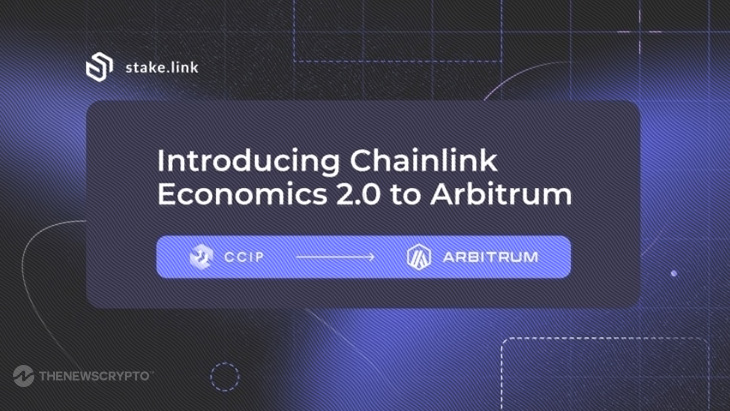Stake.link Introduces Cross-Chain LINK Staking on Arbitrum
0
0

Stake.link, the Chainlink Ecosystem’s delegated liquid staking protocol, has announced that cross-chain staking on Ethereum’s most popular Layer-2 network, Arbitrum, is now available. With this move, users will no longer have to pay outrageous gas expenses to stake LINK and receive incentives, allowing stake.link to open a second home on Arbitrum and continue to provide the most advanced Chainlink staking experience.
After recent votes by the Council, the stake.link Governance Council decided to go cross-chain. Stake.link is strengthening the crypto economic security of the ETH-USD price feed and adding to the 45,000,000 LINK that are already safeguarding the feed with the introduction of cross-chain LINK staking on Arbitrum.
Anyone in the Chainlink community may easily provide collateral (LINK) to 15 of the most well-known node operators and get incentives (stLINK, the protocol’s liquid staking receipt token) by using Stake.link.
StLINK allows users to participate in DeFi by pooling their stLINK in the Curve Finance stLINK/LINK pool, in addition to earning a blended staking reward between the Chainlink Community Staking Pool and the Node Operator Staking Pool. All of this happens while the node operators continue to reward their staked LINK tokens.
Although Chainlink staking has been available on the Ethereum mainnet for 14 months, regular stakers are facing more challenges as a result of its increasing popularity. The most popular L1 blockchain, Ethereum, has a lot of traffic and expensive gas costs. This implies that users must pay a high price to stake, withdraw, and receive rewards as LINK stakers.
With the release of Chainlink Staking v.02, which increased the amount of liquidity available to secure the ETH-USD data stream from 25 million LINK to 45 million LINK and allowed users to withdraw previously staked LINK, this problem has become much worse. The much-awaited arrival of this improvement caused LINK staking activity to skyrocket as more people hurried to become involved, worsening Ethereum’s high gas costs issue.
Users may now choose to stake LINK on Arbitrum, the most popular L2 intended for developing the world’s first smart contract blockchain, rather than being compelled to stake directly on the Ethereum mainnet. Due to this increase, users may now stake both LINK tokens and the SDL governance token of stake.link on Arbitrum and get an NFT called reSDL, which represents staked SDL.
Users will also have the option to bridge their stLINK receipt tokens onto Arbirtrum in order to turn them into wrapped staked LINK, or wstLINK, tokens.
By lowering participation fees, the option to go cross-chain on Arbitrum opens the door for a more user-friendly and gas-efficient staking experience for the Chainlink community, hence improving accessibility. Stakeholders in LINK will have the opportunity to investigate further yield-generating DeFi operations on Arbitrum concurrently.
The close association that the stake.link protocol has with Arbitrum—which provides a funding program that is protocol-friendly for initiatives that launch on its network—will also help the protocol. Furthermore, stake.link intends to collaborate closely with Camelot, a decentralized trading platform built on Arbitrum that runs its own rewards program and gives stakers extra incentives in the form of its own GRAIL token.
With the highest LINK staking returns currently offered, stake.link is the only third-party liquid staking option for the Chainlink ecosystem.
Stake.link’s continuous growth is essential to the development of Chainlink, which has become one of the Web3 ecosystem’s most fundamental elements. Through a variety of services, such as cross-chain, compute, and data, the Chainlink Platform powers the great majority of DeFi and Onchain Finance applications, all of which are essential to the DeFi ecosystem’s basic functioning. This function is what brought about the launch and growth of the much awaited Staking for the Ecosystem security mechanism.
0
0









